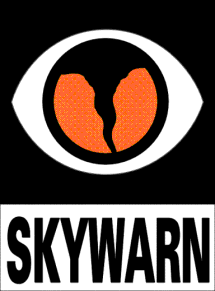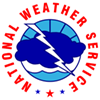 NWS WAKEFIELD SKYWARN COURSE OFFERINGS
NWS WAKEFIELD SKYWARN COURSE OFFERINGS
Each year, the staff of NWS Wakefield brings SKYWARN out into the community. NWS Wakefield meteorologists, in partnership with local government or other civic groups, present SKYWARN classes every spring and fall. SKYWARN is a nationwide network of volunteer weather spotters who report hazardous weather to local National Weather Service (NWS) offices. Amateur radio operators and weather observers, generally operating through local organizations, are ideally equipped to contribute to the SKYWARN program. However, the general public is also an integral part of this program, serving as our "eyes on the ground" during times of severe weather.
*Due to limited extra staffing in the summer months, classes are generally taught between September and May. Due to high demand, this class will NOT be held in every county every year. You may attend a class in any location, regardless of where you live.
If you are interested in hosting a SKYWARN class, please contact Mike Montefusco, SKYWARN™ coordinator at the National Weather Service in Wakefield.
The Basic SKYWARN course is a prerequisite for our Advanced course. Basic SKYWARN provides the general public an overview of severe weather across our region. Upon completion of the course, you will be certified as an NWS SKYWARN spotter by the NWS.
National Weather Service Overview & Mission
Our Office
Basic Severe Weather Definitions
Lightning Safety
The Importance of SKYWARN Spotters
CoCoRaHS
What Causes Thunderstorms?
Thunderstorm Ingredients and Threats
You Make the Call…Interactive Weather Spotting Exercise
Reporting Severe Weather to the NWS
Winter Weather Operations (Fall)
Tropical Weather Operations (Spring)
NWS Products & Services – How to Stay Informed!
How to Navigate Weather.gov/Wakefield
The Advanced SKYWARN class builds on principles taught in Basic. For that reason, completion of Basic SKYWARN is required to attempt the Advanced course. The advanced class features thunderstorm structure, tornadogenesis, and basic severe weather Parameters that NWS Meteorologists look for to determine severe storm potential. Basic radar meteorology topics are also discussed at length.
The Advanced course includes:
Review of Basic SKYWARN Terms & Concepts
Severe Weather Ingredients
Radar Basic Operations & Dual Polarization Radar
Radar Signatures
Severe Weather Signatures and Storm Intensity
Understanding Rotation and Shear
Net Control (1-2 per year in our forecast area)
The Net Control class is made for and conducted by amateur radio operators who are interested in becoming Desk Operators for the SKYWARN amateur radio program in support of NWS Wakefield. There is no prerequisite but completion of Basic SKYWARN is strongly encouraged before attempting this course.
The Net Control course includes:
Basics on the SKYWARN amateur radio program and organizational structure
The Network, subnets, and specs
Modes of operation of the SKYWARN amateur radio program
How to operate the Net Control position
Working with spotters to generate useful, accurate reports in real-time for NWS Wakefield.
CoCoRaHS Training (1-2 per year in our forecast area)
The CoCoRaHS training class is for CoCoRaHS observers and those who would like more information regarding how to make accurate rain and snow measurements. There is no prerequisite but completion of Basic SKYWARN is strongly encouraged before attempting this course.
CoCoRaHS stands for Community Collaborative Rain, Hail and Snow Network. CoCoRaHS began with the Colorado Climate Center at Colorado State University in 1998 in response to the damaging Fort Collins flood in 1997.
The CoCoRaHS network is looking for enthusiastic volunteers to report rainfall, snowfall and hail information. Observers can be individuals, who take readings in their backyard, or school classes that take readings at their school. The measurements are made using high quality 4 inch rain gauges and hail pads. The information is used by a wide variety of organizations such as: National Weather Service; television meteorologists; hydrologist; researchers; emergency managers and many others. Become a piece of the meteorological puzzle and join the other 8,000 volunteers from across the country and become a CoCoRaHS observer.
Please visit the CoCoRaHS website at www.cocorahs.org to learn more about the program. You can click on the "Join CoCoRaHS"link to become an observer. You can go through the on-line training or attend a training class to be on your way to become a part of the meteorological community.